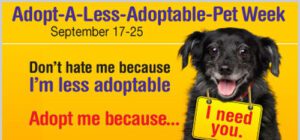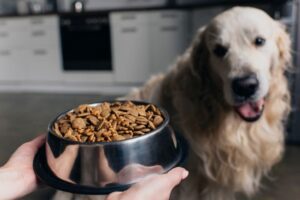Key Takeaways:
- Wet food for dogs can be more palatable and appealing to picky eaters.
- It typically contains higher moisture content, which helps in maintaining hydration levels in dogs.
- Wet food can be easier to chew and digest, making it suitable for dogs with dental or digestive issues.
- However, wet food is generally more expensive than dry kibble and has a shorter shelf life once opened.
- Some wet dog foods may contain lower nutritional value compared to high-quality dry dog foods.
Are you a dog lover? Do you want to ensure your furry friend is getting the best nutrition possible? If so, then understanding the pros and cons of wet food for dogs is essential. This topic not only sheds light on the value of providing wet food to your canine companion but also highlights potential drawbacks that you need to be aware of. Whether you're considering switching your dog's diet or simply curious about the benefits and drawbacks of wet food, this article will provide all the information you need. So, let's dive in and explore the world of wet food for dogs together!
The Benefits of Feeding Wet Food to Dogs
Feeding wet food to dogs has several benefits that can contribute to their overall health and well-being. One major advantage is that wet food contains a higher moisture content compared to dry kibble. This increased moisture can help keep dogs hydrated, especially if they don't drink enough water on their own. Additionally, the soft texture of wet food makes it easier for dogs with dental problems or missing teeth to eat and digest their meals.
Furthermore, wet food tends to be more palatable for dogs due to its rich aroma and flavors. This can be particularly beneficial for picky eaters or dogs with decreased appetite. When a dog enjoys their meal, they are more likely to consume all the necessary nutrients they need for optimal health.
Improved Digestion
The high moisture content in wet dog food aids in digestion by promoting bowel regularity and preventing constipation. The added water helps soften the stool, making it easier for dogs to pass waste. This can be especially helpful for older dogs or those with digestive issues.
Enhanced Nutrient Absorption
The moist texture of wet food allows dogs to better absorb essential nutrients from their meals. The increased moisture helps break down the food particles, making it easier for the body to extract and utilize the nutrients efficiently. This can lead to improved overall health and vitality in dogs.
List of Benefits:
- Increased hydration
- Easier digestion
- Better nutrient absorption
- Promotes bowel regularity
- Suitable for picky eaters or dogs with dental problems
How Wet Food Helps a Dog's Digestion and Overall Health
Improved Digestion
Wet food can be beneficial for a dog's digestion due to its high moisture content. The water in wet food helps to keep the digestive system hydrated, aiding in the smooth movement of food through the intestines. This can prevent issues such as constipation and promote regular bowel movements. Additionally, wet food is generally easier for dogs to chew and swallow, reducing the risk of choking or discomfort during mealtime.
Enhanced Nutrient Absorption
The moist texture of wet food allows for better nutrient absorption in dogs. The nutrients present in the food are more easily broken down and absorbed by the body when compared to dry kibble. This means that dogs can obtain maximum benefits from their meals, ensuring they receive essential vitamins, minerals, and proteins necessary for their overall health.
List of Benefits:
- Hydrates the digestive system
- Reduces the risk of constipation
- Easier to chew and swallow
- Enhances nutrient absorption
Overall, feeding your dog wet food can contribute to improved digestion and overall health by providing hydration and facilitating better nutrient absorption.
Possible Drawbacks of Feeding Dogs Wet Food
While wet food has its advantages, there are also some potential drawbacks to consider.
Dental Issues
One drawback is that wet food does not provide the same dental benefits as dry kibble. Chewing on dry kibble helps remove plaque buildup on a dog's teeth, promoting good oral hygiene. Wet food lacks this abrasive action, which may increase the risk of dental problems such as tartar buildup or gum disease. To mitigate this issue, it is important to incorporate dental care practices like regular teeth brushing or offering dental chews alongside wet food.
Storage and Spoilage
Another drawback of wet food is its shorter shelf life once opened. Unlike dry kibble, wet food needs to be refrigerated after opening and consumed within a certain timeframe to prevent spoilage. This can be inconvenient for pet owners who prefer to leave food out for their dogs throughout the day or those who travel frequently with their pets. However, proper storage and adhering to expiration dates can help overcome this challenge.
List of Drawbacks:
- Lack of dental benefits
- Shorter shelf life after opening
It's important to weigh these potential drawbacks against the benefits when deciding whether to feed your dog wet food.
Does Wet Food Provide all the Nutrients Dogs Need?
Wet food alone may not provide all the necessary nutrients that dogs need for optimal health. While it does contain essential nutrients, such as proteins, fats, and carbohydrates, the specific formulation of each brand varies. It is crucial to choose a high-quality wet food that meets the nutritional requirements established by regulatory bodies like the Association of American Feed Control Officials (AAFCO).
Supplementing wet food with other sources of nutrition can ensure a well-rounded diet for your dog. This can include incorporating dry kibble or adding fresh fruits and vegetables as recommended by your veterinarian. Consulting with a veterinary professional will help determine if additional supplements are necessary based on your dog's specific needs.
Can Wet Food Help with Dental Problems and Allergies in Dogs?
While wet food may not directly address dental problems or allergies in dogs, it can indirectly contribute to their management.
Dental Problems
As mentioned earlier, wet food lacks the abrasive action provided by chewing on dry kibble, which helps maintain good oral hygiene. However, some brands offer specialized dental care formulas in wet form that may help reduce tartar buildup or promote healthier teeth and gums. These formulas often contain ingredients that support dental health, such as enzymes or additives that help control plaque.
Allergies
If your dog has specific food allergies or sensitivities, wet food can be a suitable option. Many wet food varieties are formulated with limited ingredients, making it easier to identify and avoid potential allergens. Additionally, the moist texture of wet food can be more appealing to dogs with dental issues or those who have difficulty chewing dry kibble due to allergies.
It is important to consult with a veterinarian to determine the best approach for managing dental problems or allergies in your dog and whether wet food is an appropriate part of their diet.
How Often and How Much Wet Food Should Dogs Eat?
The frequency and quantity of wet food to feed your dog depend on various factors, including their age, weight, activity level, and overall health. It is essential to follow the feeding guidelines provided by the specific brand of wet food you choose.
As a general guideline, adult dogs typically require two meals per day. The recommended portion size varies based on the dog's weight and should be adjusted accordingly. Puppies may require more frequent meals throughout the day due to their higher energy needs for growth and development.
To ensure proper nutrition and prevent overfeeding, it is crucial not to exceed the recommended daily intake of calories for your dog's specific requirements. Regular monitoring of your dog's weight and consultation with a veterinarian will help determine the appropriate feeding schedule and portion sizes for optimal health.
Alternative Options to Wet Food for Similar Benefits in Dogs
While wet food offers certain advantages, there are alternative options available that can provide similar benefits for dogs.
Semi-Moist Food
Semi-moist food falls between dry kibble and wet food in terms of moisture content. It offers convenience similar to dry kibble while providing a softer texture that is easier to chew and digest. However, it is essential to choose high-quality semi-moist food that meets the nutritional requirements of your dog.
Homemade Diets
Some pet owners prefer preparing homemade diets for their dogs. This allows for complete control over the ingredients and ensures a tailored approach to meet specific dietary needs. However, it is crucial to consult with a veterinary nutritionist or veterinarian to ensure the homemade diet provides all the necessary nutrients in appropriate proportions.
List of Alternative Options:
- Semi-moist food
- Homemade diets (with professional guidance)
Exploring these alternative options can help you find the best fit for your dog's individual needs and preferences while still providing similar benefits as wet food.
In conclusion, wet food for dogs has its pros and cons. It can provide more moisture and variety in their diet, but it may be more expensive and have a shorter shelf life. It's important to consider these factors and choose the best option for your furry friend's health and well-being.
Is it OK to give a dog wet food everyday?
Fact: Dogs can be fed wet food on a daily basis. The choice of feeding method can depend on your budget and the overall health of your dog.
Is wet food good or bad for dogs?
Feeding your dog wet food can help keep them hydrated, while dry food promotes dental health. Since wet and dry dog foods offer different benefits, another option is to feed a combination of both to ensure your dog receives a balanced diet that meets all their needs.
Do dogs like wet food better than dry food?
According to veterinarian Linda Simon from Senior Tail Waggers, most dogs, especially smaller breeds and selective eaters, tend to prefer wet food. Wet food is beneficial for dogs with kidney or bladder stones due to its high moisture content.
Why do dogs need more wet food than dry?
Wet dog food has the advantage of being more satisfying and easier to digest due to its higher moisture content. It is important to consider the appropriate serving size based on your dog's weight to ensure they are receiving adequate nutrition. For additional guidance on helping your overweight pet, refer to the article "Help your pet lose weight the smart way" published on April 6, 2023.
What are the disadvantages of canned dog food?
Canned dog food is pricier per energy calorie compared to kibble because of its higher water content and packaging. Additionally, some dogs may be at risk for periodontal disease with regular consumption of canned food.
Do dogs poop less on wet food?
The high moisture content of wet dog food, around 70-75%, compared to the low moisture content of dry kibble at only 10%, is the reason why wet food can cause loose stools in dogs. Additionally, the high protein and fat content of canned foods contribute to the bulkiness of the stool.

















